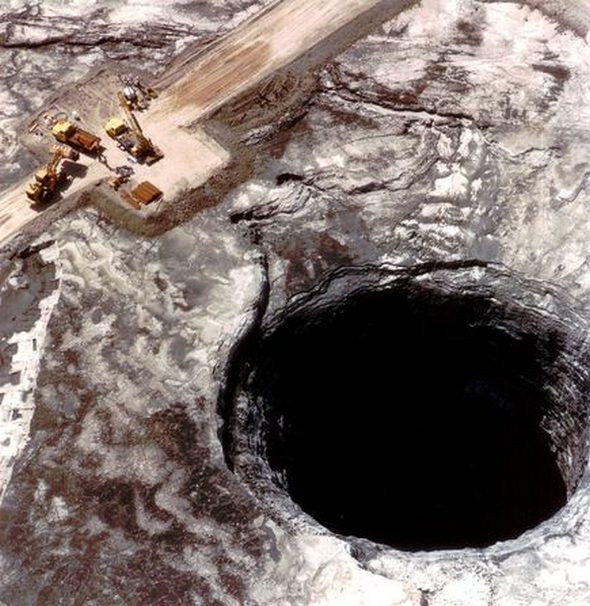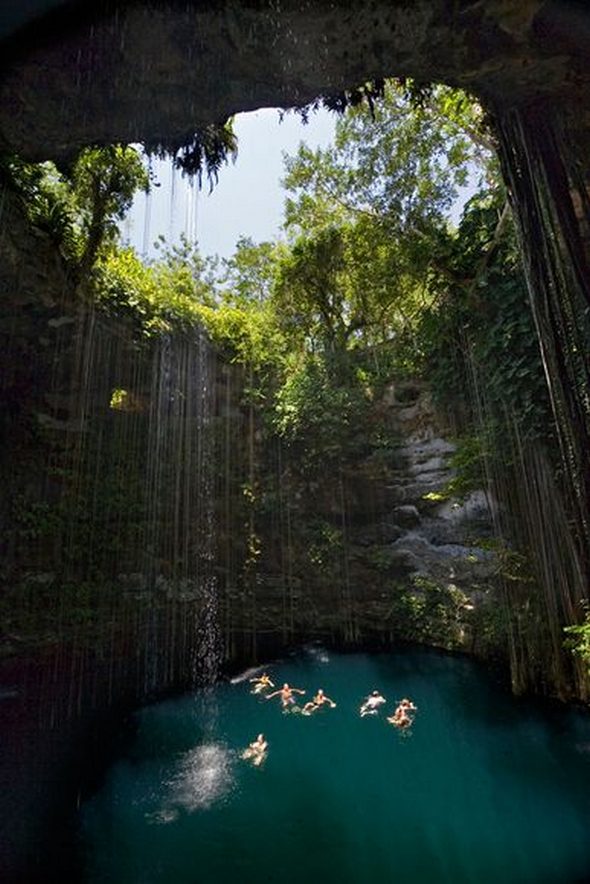The world, as we know it, has been in
turmoil since its very beginning. Pictures of the past are reminders of
the unspeakable horrors and sufferings that has been a part of our
history and of course, the brutality that was and still is Man’s wont.
Following are some of the saddest and most shocking pictures ever taken. Do share your thoughts one these shocking images in comment section.
Atomic Bombings of Hiroshima and Nagasaki

Above are pictures of the only active
use of Atomic Bombs in a war. At the climax of the Second World War, the
US deployed two Atomic Bombs, one each on the Japanese cities of
Hiroshima and Nagasaki, the effects of which killed 90,000–166,000
people in Hiroshima and 60,000–80,000 in Nagasaki.
Execution of a Viet Cong Soldier

The above photo, titled "General Nguyen
Ngoc Loan executing a Viet Cong prisoner in Saigon”, is regarded as one
of the most famed images in the history of journalism. Late American
photographer, Edward Adams was awarded a Pulitzer Prize for the picture
that shows South Vietnam’s Chief of National Police executing a Viet
Cong soldier.
September 11 Attacks

On September 11, 2001, terror struck
America as two passenger airliners allegedly hijacked by Al-Qaeda
operatives crashed into the twin towers, raising them to the ground and
claiming the lives of almost 3000 innocent people. Several photos of the
tragedy show people jumping to their deaths to escape the flames that
erupted after the collision.
Abu Ghraib Jail

A year after the 2003 invasion of Iraq,
shocking reports of torture, rape and homicide of prisoners held in Abu
Ghraib prison began to surface, according to which the perpetrators of
said acts were US military personnel in conjunction with Other
Government Agencies.
The Child and the Vulture

The picture, taken by late South African
photographer Kevin Carter, shows a starving Sudanese child stopping to
rest her frail body while crawling towards a United Nations feeding
center as a vulture waits expectantly nearby. Carter was awarded a
Pulitzer Prize for the photo.
Palestinian Father Shielding Son

The above pictures are frames from a
shocking scene captured by a France 2 cameraman near Gaza Strip. The
footage shows Palestinian father Jamal al-Durrah, trying to shield his
12-year-old son, Muhammad al-Durrah, from gunfire while hiding behind a
concrete wall, signaling and calling out to Israeli troops to stop
firing. Jamal’s son was shot dead and he himself, gravely injured.
Hector Pieterson (Soweto Uprising)

Hector Pieterson became an icon of the
1976 Soweto uprising in South Africa when he was shot dead in Police
retaliation to a student protest. The picture above shows him being
carried by a fellow student.
Burial of an Unknown Child (Bhopal Disaster)

The picture above shows one of 3,787
deaths caused by the 1984 Bhopal disaster wherein a toxic gas (MIC) was
released from a Union Carbide India Limited pesticide plant following
which, approximately 40,000 cases of illness or disability caused by the
exposure to the gas were confirmed.
Lynching of Young Black Men

This appalling photo shows the lynching
of two young black men who were accused of the rape of a Caucasian woman
and murder of her boyfriend. More horrendous than the tortured, bloody
carcasses is the apparent joy on the faces of the lynch mob members.
The Last Jew of Vinnitsa

"The Last Jew of Vinnitsa” (Left) shows a
Jew on his knees in front of a mass grave about to be executed by a
member of an SS paramilitary death squad, Einsatzgruppe D.
Nature never stops to amaze us with its magnificent phenomenon just like these inexplicable holes in the ground. I bet that these holes make an excellent tourist attraction. Check out these unreal photographs and location descriptions of 9 of world’s most famous pits and sinkholes. (Courtesy of National Geographic)
1. Lisbon, Portugal, Sinkhole

A parked bus was the unfortunate "meal” of a sinkhole that opened up in the streets of Lisbon, Portugal, in 2003.
"Anything that increases the flow of
water into subsurface soil can speed up the formation of sinkholes’”
,Missouri State’s Gouzie said. In many cities, utility infrastructure
such as sewer lines and fiber optic cables are buried in troughs filled
with loose material, which can wash away over time. In some cases, a
stretch of road can essentially become a concrete bridge over mostly
empty space.
"It’s eventually not enough to hold the weight of the next truck over it,” Gouzie said.
2. Guatemala Sinkhole


Heavy rains from tropical storm Agatha
likely triggered the collapse of a huge sinkhole in Guatemala on Sunday,
seen above a few days afterward.
In the strictly geologic use of the
word, a sinkhole happens when water erodes solid bedrock, carving an
underground cavity that can then collapse. Many parts of the United
States are at risk for that type of event.
The Guatemala sinkhole fits into a
broader use of the term, which refers to any sudden slump of the
ground’s surface. Instead of solid bedrock, much of Guatemala City rests
atop a layer of loose, gravelly volcanic pumice that is hundreds of
feet thick. And at least one geologist says leaking pipes—not
nature—created the recent sinkhole.
Overall, the risk for repeat sinkholes in Guatemala City is high—but highly unpredictable.
3. Winter Park, Florida, Sinkhole

he sinkhole in Winter Park, Florida
(map), opened up in 1981 underneath the city’s public swimming pool,
Missouri State’s Gouzie said.
"I’ve never seen a final report as to
whether the pool was leaking,” he said, adding that water can flow into
the underlying soil through tiny cracks in the bottom of a pool. Even
watering plants at the pool’s perimeter could have sent enough runoff
through Florida’s sandy soil to erode the solid limestone underneath.
Gouzie said the U.S. Geological Survey
has mapped the types of bedrock that exist across the country. But
studies of the underground cracks and fissures—and the way water travels
through them—are still needed to predict where sinkholes could occur.
4. Mulberry, Florida, Sinkhole

This 185-foot-deep (56-meter-deep)
sinkhole appeared in 1994 in Mulberry, Florida (map), in a pile of waste
material dumped by mining company IMC-Agrico. The company was mining
rock to extract phosphate, a main ingredient in fertilizers and a
chemical used to produce phosphoric acid, added to enhance the taste of
soda and various food items.
After phosphate was extracted from the
rocks, the gypsum-based waste product was dumped as a slurry. As layer
after layer of the stuff dried, it formed cracks, like those that appear
in dried mud. Water later made its way through the cracks and carried
away subsurface material, setting the stage for a sinkhole.
5. Blue Hole, Belize

Sinkholes can happen anywhere water can
erode a vertical channel that connects to a horizontal drain, a
situation that allows a column of solid material to wash away, Missouri
State’s Gouzie explained.
If the sinkhole is near the sea—or in
the sea, as with the famous Blue Hole in Lighthouse Reef off the coast
of Belize—seawater can quickly seep in after a collapse, forming a deep
pool.
6. Picher, Oklahoma, Sinkhole

Years of mining for zinc and lead has
left Picher, Oklahoma, near the border with Kansas, literally full of
holes—including this sinkhole seen in 2008. Some mines were dug too
close to the surface, and the roofs were unable to support the weight of
earth on top, leading to collapses.
"It has happened in Missouri and in
western Pennsylvania from coal mining,” Missouri State’s Gouzie said.
"We’ve gotten better with buidlng mines so the roofs can support the
weight over top of them.”
7. Iceland Sinkhole

Adventure kayaker Mick Coyne lowers
himself down the wall of a sinkhole toward the headwaters of the
Jokulsa, Iceland’s second longest river. Though the river is fed by melt
from a glacier, this 150-foot (45-meter), inverted funnel-shaped hole
was blasted into being by rising steam from geothermal vents below.
8. Ik-Kil Cenote, Mexico

Swimmers float in the saphirre waters of
the Ik-Kil cenote, near the Maya site of Chichén Itzá in Mexico’s
Yucatán Peninsula. Cenote means "natural well” in Spanish. Sinkholes
occurring at sea level will fill up as high as the water table, creating
the famous clear blue pools, used by the Maya royalty for both
relaxation and ritual sacrifices.
9. Neversink Pit, Alabama

Neversink Pit, a wet
limestone sinkhole in Alabama seen above in 1998, is about 50 feet (15
meters) deep and houses a rare species of fern. The sinkhole was bought
in the 1990s by a group of cavers to preserve it for future generations.
Karst is the geologic
term for landscapes formed mainly by the dissolving of limestone or
dolomite bedrock. In the United States, karst underlies parts of
Missouri, Arkansas, Kentucky, Tennessee, northern Alabama, Texas, and
most of Florida. Such areas are marked by sinking streams, subterranean
drainage, large springs, caves—and, of course, sinkholes.
Source: chilloutpoint & listphobia
| 


















